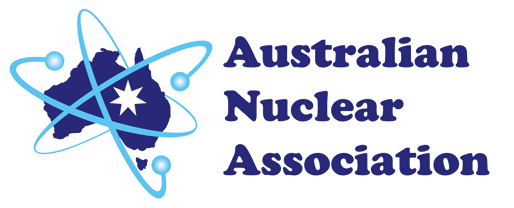What about Thorium as Nuclear Fuel?
Thorium is a primordial element; its half-life of 14 billion years is longer than the age of the Earth. It is widely distributed with an average concentration of 10 ppm in earth’s crust; almost 3 times more abundant than uranium. Natural thorium is 100% thorium-232.
Thorium is a good fuel for nuclear reactors but there are challenges.
Benefits
Benefits include the natural abundance of thorium, no need for enrichment and the lack of long lived transuranics in spent fuel. Spent fuel from the thorium fuel cycle contains the same amounts of fission products as uranium reactors, but very much lower levels of long-lived plutonium and americium. This means the radiotoxicity of spent fuel from the thorium fuel cycle is much lower after a few hundred years.
Challenges
The main challenge of the thorium fuel cycle is that thorium does not fission when it absorbs a neutron. Instead, it becomes protactinium-233 which beta decays to become uranium-233 which is fissile. Thorium requires at least two neutrons to fission.
In a reactor, thorium-232 absorbs a low energy neutron to become thorium-233 which undergoes consecutive beta decays to become protactium-233 to become uranium-233 which is fissile which can be used as a as a nuclear fuel.
Th-232 + n ⟶ Th-233 (τ½ = 22 min) ⟶ Pa 233 (τ½ = 27 day) ⟶ U-233
Other challenges include radiation emitted by the thorium decay chain, a higher cost of fuel fabrication and the need to manage the radiation from uranium‑232 which contaminates the uranium-233.
Uranium-232 is produced by parasitic (n,2n) reactions on uranium-233, or on protactinium-233, or on thorium-232. Uranium-232 has a relatively short half-life of 68.9 years but its decay chain produces very penetrating gamma rays which make handling uranium-233 more difficult than conventional fuels.
Historic Uses of Thorium Fuel Cycle
The US produced about 2 tons of U-233 between 1940 and 1970 for its weapons program and in the expectation it would be used to fuel power reactors. A uranium-233 device was detonated in 1955.
In the USA, thorium and highly enriched uranium was used in Indian Point Unit 1 (1962-74), Peach Bottom (1964-74) and Fort St Vrain (1979-89) commercial power plants.

The Molten-Salt Reactor Experiment (MSRE) at Oak Ridge National Laboratory was an experimental molten salt reactor which operated at 7.4 MWth from 1965 to 1969. In October 1968, MSRE became the world’s first reactor to operate using only U-233. The MSRE experience demonstrated a molten salt fuelled reactor was viable.
In Germany, thorium was used in the AVR (1967-88) and the THTR-300 (1985-89), both pebble bed reactors.
In the UK, the Dragon High Temperature gas cooled reactor (HTR) used thorium HEU fuel elements in a breed and feed mode in which the U-233 formed during operation replaced the consumption of U-235.
Indian heavy water reactors (PHWRs) have used thorium-bearing fuel bundles for power flattening in some fuel channels.
India has a three-stage nuclear program to use its reserves of thorium. The first stage is to use existing natural uranium fuelled pressurised heavy water reactors (PHWR) to produce electricity and plutonium-239. The second stage will use Fast Breeder reactors to increase the amount of plutonium. The third stage will use Advanced Heavy Water Reactors (AHWRs) will burn thorium-plutonium fuels.
Thorium-based fuels for the ‘Candu’ PHWR system have been designed and tested in Canada at AECL’s Chalk River Laboratories for more than 50 years.
Current Developments
Several organisations are developing molten salt reactors that could use thorium fuel, but most are at the design stage.
Thorcon’s is developing a molten salt reactor can operate using low-enriched uranium today, with a straight-forward path to incorporate thorium fuel in the future. Thorcon is developing the Thorcon 500 as Indonesia’s first commercial nuclear power plant with a total capacity of 2 x 250 MW. Thorcon is currently undergoing the licensing process in Indonesia to obtain approval for its Site Evaluation Program and Site Evaluation Management System.
Copenhagen Atomics is developing a thorium molten salt reactor, which will run on 5% enriched uranium as fuel salt and thorium as blanket salt. A prototype reactor is to be tested in a in a critical experiment at the Paul Scherrer Institute in Switzerland beginning in 2026-27.
Thorium fuels are being developed for PWR and BWR reactors as uranium extenders which involves gaining energy from the produced U-233.
China has launched an R&D program on thorium-breeding molten-salt reactors:
-
-
- TMSR-SF – thorium and uranium in pellets or prism blocks with molten salt cooling.
- TMSR-LF – liquid uranium and thorium fuel is dissolved in a fluoride molten salt.
-
The Chinese 2 MWth TMSR-LF1 liquid fuel thorium-based molten salt experimental reactor achieved full power operation on 17 June 2024. It uses fuel enriched to under 20% U-235, and a thorium inventory of about 50 kg. The design is based on the molten salt reactor experiment at Oak Ridge in the 1960s. A 60 MWth pilot plant based on the TMSR-LF1 design is planned for the same site.

